Watering Plants Before a Freeze: Myths and Facts
- January 16, 2024
- 0 comment
Explore the truth about watering plants before a freeze. This guide debunks myths and presents the facts clearly. As winter arrives, making the most of every drop of water is super important. With so much info out there, it’s tricky to figure out what’s real and what’s just guessing. In this journey, we’ll tackle common myths about watering, aiming to uncover the truths that’ll help your plants stay happy and healthy in the chilly winter weather.
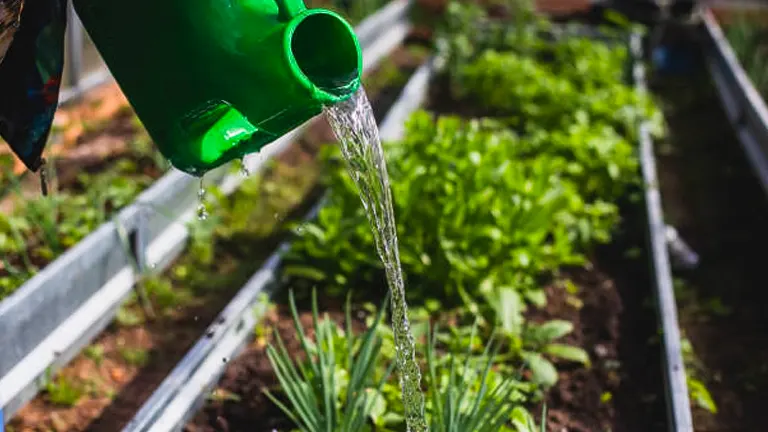
List of Myths and Facts about Watering Plants Before a Freeze
- Watering Right Before a Freeze Prevents Frost Damage
- Plastic or Frost Blankets Completely Protect Plants from Freezing
- Bringing Potted Plants Indoors Ensures Survival
- Commercial Anti-Freeze Sprays Guarantee Protection
- Drought-Tolerant Plants Don’t Need Winter Watering
- Mulching Plants Before a Freeze is Unnecessary
- Ice on Plants Acts as a Protective Layer
- All Plants Require the Same Winter Watering Schedule
- Watering Can Only be Done During Daylight Hours
- Windy Conditions Negate the Need for Watering Before a Freeze
Myths and Facts about Watering Plants Before a Freeze
1. Myth: Watering Right Before a Freeze Prevents Frost Damage
Some folks believe that soaking the soil a lot before it gets super cold helps protect plants from freezing. They think the wet soil acts like a blanket, keeping the plants warm. But doing this right before it gets really cold can actually be bad. It might make ice form around the plant roots, which can hurt them more.
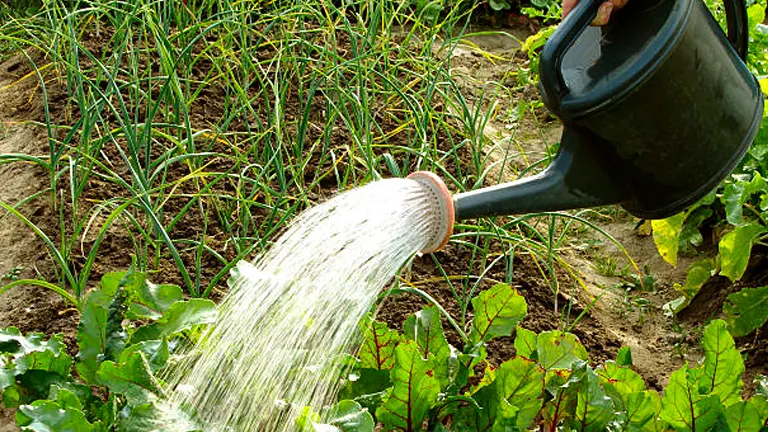
Facts: Contrary to this belief, watering the soil deeply right before a freeze can be counterproductive. The excess moisture may freeze around the roots, potentially causing damage. The optimal approach involves deep watering several days prior to the anticipated freeze. This allows the soil to absorb the moisture gradually, enabling the plant to regulate its water content and fortify its cells against freezing temperatures. Understanding the appropriate timing for watering contributes significantly to the plant’s resilience during cold spells.
2. Myth: Plastic or Frost Blankets Completely Protect Plants from Freezing
Some mistakenly believe that shielding plants with plastic or frost blankets guarantees complete protection by trapping enough heat during freezing temperatures.
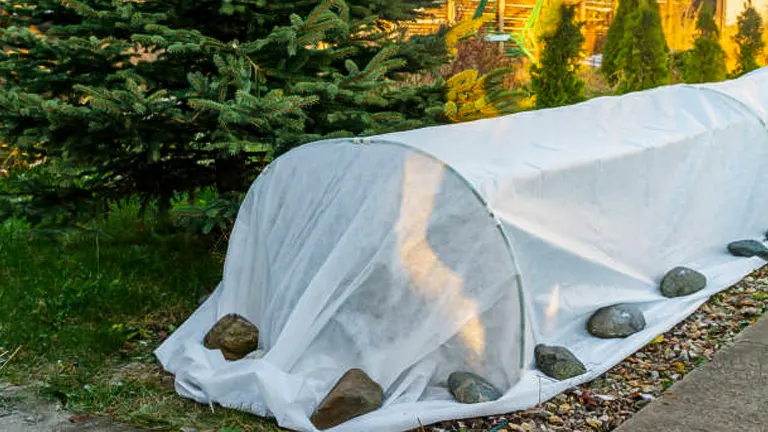
Facts: While these covers provide some shelter, using plastic can be problematic. It tends to trap moisture, which may result in damage to the plants. Opting for breathable materials such as burlap is essential. It allows proper air circulation, preventing moisture buildup and ensuring effective protection. This approach safeguards plants from potential harm caused by freezing conditions while maintaining a healthy environment around them.
3. Myth: Bringing Potted Plants Indoors Ensures Survival
Many believe that bringing potted plants inside before a freeze guarantees their survival. However, it’s important to know that sudden shifts in temperature can stress the plants.

Facts: While it’s a good idea to bring plants indoors during cold weather, sudden temperature shifts can be tough for them. To give them the best chance at surviving, it’s better to introduce potted plants to indoor conditions slowly. Start by putting them in a sheltered place, like a garage or porch, for a few days before moving them inside. This gradual adjustment helps plants adapt to the change in temperature, reducing stress and increasing their likelihood of thriving during the winter months.*
4. Myth: Commercial Anti-Freeze Sprays Guarantee Protection
There’s a belief that using commercial anti-freeze sprays will ensure plants are shielded from frost damage, providing a convenient solution for winter care.
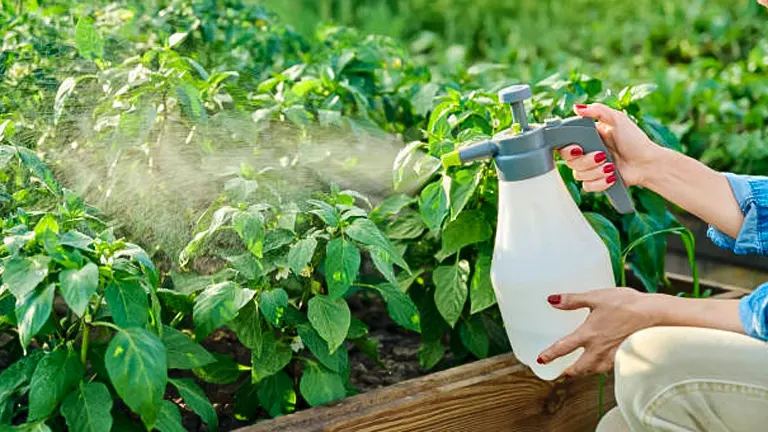
Facts: Contrary to this belief, many commercial anti-freeze sprays contain alcohol, which can have detrimental effects on plants by causing dehydration and potentially worsening the damage. Opting for alternative methods like proper watering practices, mulching, and other frost protection techniques proves to be more effective and safer for both plants and the environment. Prioritizing natural approaches fosters a healthier and more sustainable environment for your beloved green companions.
Friendly Tips: When it comes to protecting your plants from frost, consider the natural route. Stick to tried-and-true methods like watering and mulching to ensure your plants stay safe and sound during chilly weather.
5. Myth: Drought-Tolerant Plants Don’t Need Winter Watering
It’s a common belief that plants labeled as drought-tolerant require no additional watering during winter, assuming their resilience eliminates the need for extra care in colder months.
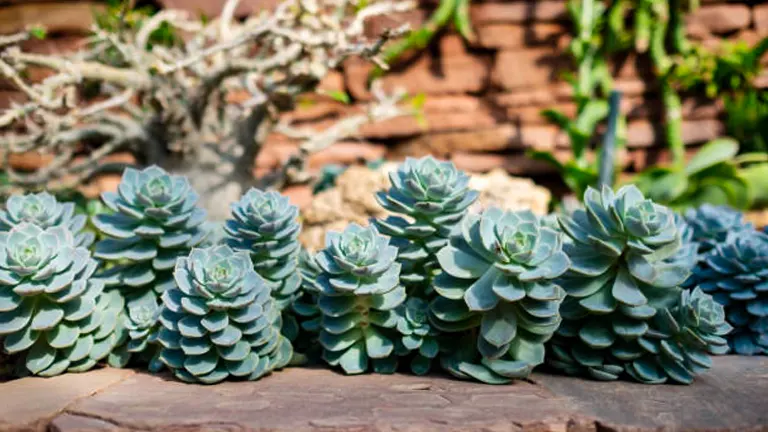
Facts: Newly planted drought-tolerant plants, even though naturally hardy, may still benefit from supplemental watering, especially during their first season. Winter conditions can be challenging, and providing moisture during this period contributes to the plants’ establishment and overall health. Ensuring a steady water supply helps them navigate through the initial stages of growth and prepares them to thrive in subsequent seasons.
Friendly Tips: Even tough, drought-tolerant plants might appreciate a drink during their first winter. Think of it as giving them a bit of extra support to settle in and flourish.
6. Myth: Mulching Plants Before a Freeze is Unnecessary
There’s a misconception that mulching is an unnecessary step before a freeze, with some believing it doesn’t play a significant role in safeguarding plants.
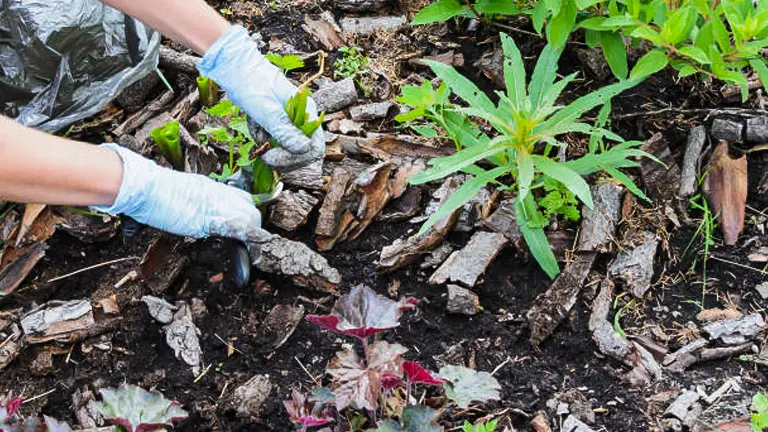
Facts: Mulching serves a crucial purpose in preparing plants for cold weather. It acts as a natural insulator, creating a protective layer over the soil that buffers against extreme temperature changes. Beyond temperature regulation, mulch conserves soil moisture, preventing it from evaporating rapidly, and shields plant roots from the potential hazards of freezing conditions. Embracing mulching as part of winter preparation is a wise strategy to ensure the well-being of your plants.
Friendly Tips: Keep your plants warm during winter by giving them a cozy blanket of mulch before it gets cold. It’s like giving them a shield against the chilly weather, making sure they stay snug and protected all winter long.
7. Myth: Ice on Plants Acts as a Protective Layer
People Believe that when ice forms on plant surfaces during a freeze, it acts as a protective layer, shielding the plants from potential damage.
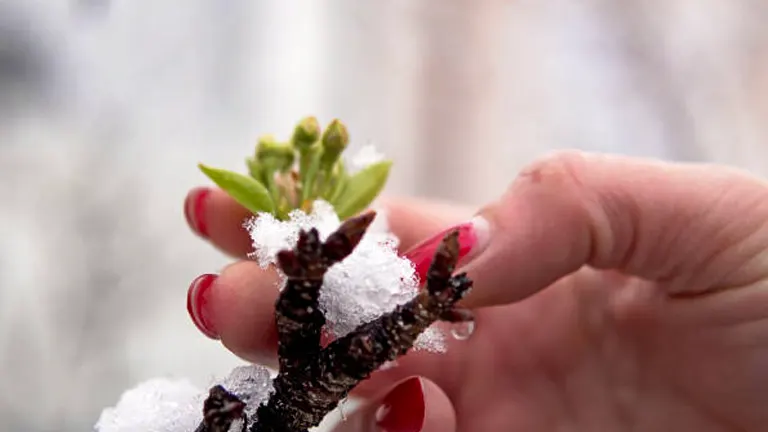
Facts: In reality, the formation of ice on plants can be detrimental. Ice can cause cell damage, potentially harming the plant. Instead of relying on ice formation for protection, it’s crucial to focus on preventive measures. Prioritizing proper watering practices and providing insulation are more effective ways to safeguard plants during freezing conditions. By addressing these factors, you ensure the well-being of your plants without relying on the risky assumption that ice alone will shield them.
Friendly Tips: Skip the ice and opt for proactive care! Focus on keeping your plants warm through proper watering and insulation, and they’ll thank you by staying healthy and thriving even in freezing temperatures.
8. Myth: All Plants Require the Same Winter Watering Schedule
A common assumption among gardeners is that all plants share the same water requirements before a freeze, simplifying watering practices to a one-size-fits-all approach.
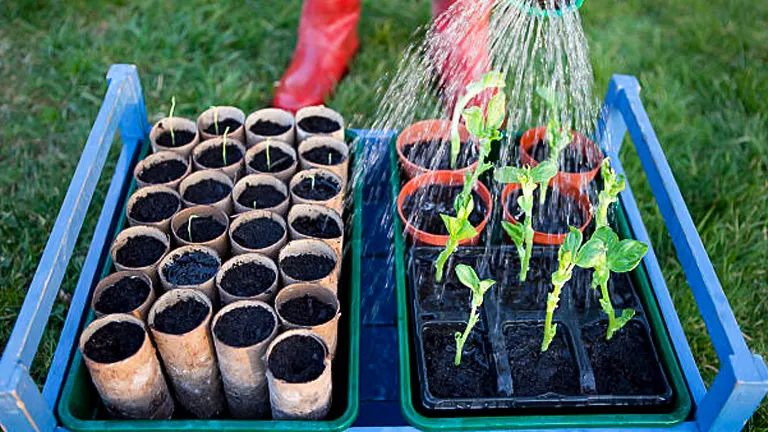
Facts: In reality, different plants have diverse water needs influenced by factors such as species, size, and location. Understanding the specific requirements of each plant is crucial for tailoring appropriate watering practices. Some plants may thrive with minimal water, while others require more to endure the winter months. Taking the time to comprehend the unique needs of each plant in your garden ensures a more effective and targeted winter watering schedule, contributing to the overall health and resilience of your diverse plant community.
Friendly Tips: Take good care of your plants by treating them like the unique individuals they are! Learn about their specific water needs, and you’ll be ready to give them the right care to help them thrive in the winter chill.
9. Myth: Watering Can Only be Done During Daylight Hours
Many believe that watering should exclusively take place during daylight hours to ward off potential frost damage.
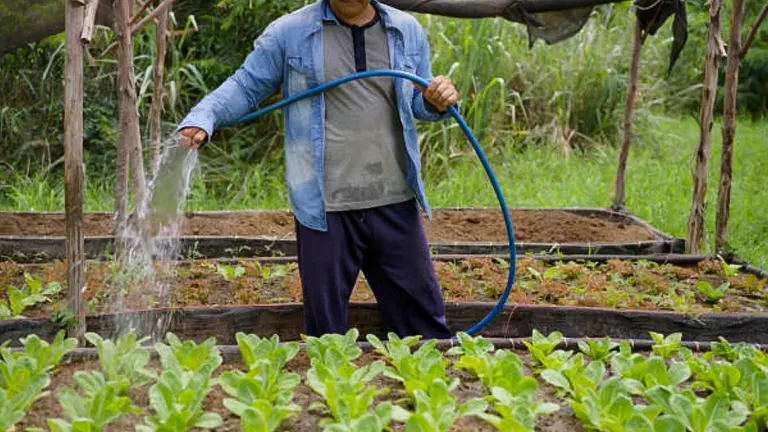
Facts: In Reality, the critical factor for watering is not the time of day but the temperature. While it’s essential to avoid watering when temperatures are below freezing, the specific time matters less. The key is to water when temperatures are above freezing, allowing the soil to absorb moisture effectively. This approach prevents potential ice formation, safeguarding plants from the risks associated with frost. By focusing on temperature considerations rather than the time of day, gardeners can ensure that their watering practices align with the needs of the plants.
Friendly Tips: Don’t stress about the clock when watering your plants in winter! Instead, pay attention to the thermometer, making sure it’s above freezing to keep your plants happy and healthy.
10. Myth: Windy Conditions Negate the Need for Watering Before a Freeze
Some people belief that windy conditions eliminate the necessity of watering before a freeze, perhaps due to the assumption that the wind will naturally dry out the soil.
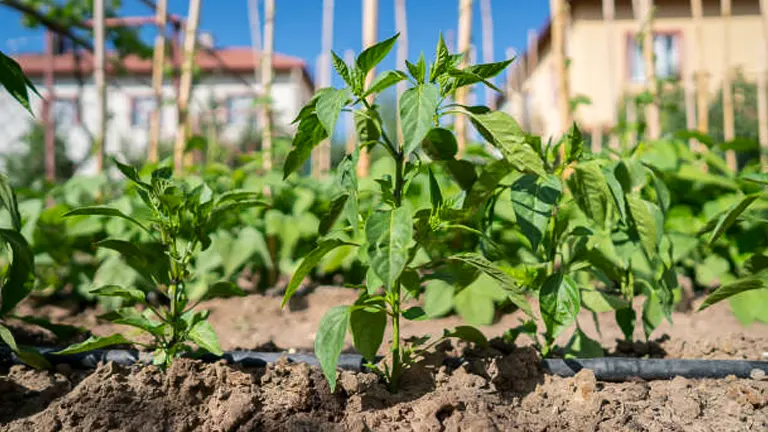
Facts: Windy conditions actually make pre-freeze watering even more crucial. Wind can speed up soil moisture evaporation, underscoring the importance of watering before a freeze. Having sufficient moisture in the soil acts as insulation against freezing temperatures. Recognizing these myths and truths is essential to ensure the well-being of plants in freezing conditions. Employing correct practices, like strategic watering and suitable protection methods, is key to helping plants thrive during winter.
Friendly Tips: Even when it’s windy, don’t skip the watering. Ensuring the soil has enough moisture acts like a natural winter coat for your plants, helping them stay cozy and healthy.
Understanding these myths and truths is vital for ensuring the well-being of plants during freezing temperatures. Applying the correct practices, such as strategic watering and appropriate protection methods, is key to helping plants thrive in winter conditions.
Factors to Consider When Watering Plants Before a Freeze
- Temperature Conditions: The temperature is a crucial factor when watering plants before a freeze. It’s essential to avoid watering when temperatures are below freezing, as this can lead to the formation of ice around the roots, potentially harming the plant. Instead, choose times when temperatures are above freezing to ensure proper absorption and minimize the risk of freezing damage.
- Type of Plant: Different plants have varying water needs, influenced by factors such as species, size, and location. Understanding the specific requirements of each plant is essential for appropriate watering practices. Some plants may require more water to establish insulation against freezing temperatures, while others might be more resilient with less frequent watering.
- Soil Moisture Levels: Monitoring soil moisture levels is critical before a freeze. Ensure that the soil is adequately moist, but not waterlogged, to provide insulation against the cold. Deep watering several days before the anticipated freeze allows the soil to absorb moisture gradually, contributing to the plant’s ability to withstand freezing temperatures.
- Wind Conditions: Windy conditions can accelerate soil moisture evaporation, emphasizing the importance of pre-freeze watering. While it might be tempting to assume that wind eliminates the need for watering, the opposite is true. Adequate moisture in the soil acts as a protective barrier, preventing rapid evaporation and offering insulation against freezing temperatures.
- Plant Growth Stage: Consider the stage of growth of the plants. Young seedlings and new transplants with limited root systems may require more frequent watering, especially if the weather is sunny and hot. On the other hand, established trees and shrubs might need supplemental watering only during extended dry spells. Adjusting watering frequency based on the plant’s growth stage is crucial for promoting overall plant health.
- Mulching Practices: Mulching is a valuable practice when preparing plants for a freeze. Applying a layer of mulch around the base of plants helps insulate the soil, providing a buffer against extreme temperature changes. Mulch conserves soil moisture and shields plant roots from potential freezing, contributing to the overall resilience of the plants during winter.
Understanding and considering these factors ensures that watering practices before a freeze are tailored to the specific needs of the plants, promoting their well-being and enhancing their ability to withstand cold conditions.
Related Post
- How to Build a Barn: A Step-by-Step Guide for Beginners
- How to Build a Sustainable Compost Bin: Easy and Eco-Friendly DIY
- How to Fertilize Bougainvillea: A Complete Guide for Stunning Blooms
- How to Fertilize Apple Trees: Essential Tips for a Bountiful Harvest
- How to Fertilize Lemon Trees: Secrets for Thriving Citrus
- How to Fertilize Avocado Tree: A Step-by-Step Guide for Lush Growth
- 10 Best Bow Saws to Buy in 2024: Top Picks for the Money
- Best Miter Saw For Beginners
- Top 10 Pruning Saws to Buy in 2024: Best for the Money
- 7 Best Pocket Chainsaw
Conclusion
In conclusion, when getting your plants ready for the cold, it’s best to clear away any misconceptions and focus on practical steps. Make sure to water them deeply a few days before the freeze, choose suitable insulation, and pay attention to what each plant likes. By following these facts, you ensure your plants are well-prepared to handle winter without any unnecessary complications. Remember, a bit of care goes a long way in keeping your garden happy and healthy during the chilly season.
FAQs
- Does watering at night provide any advantage before a freeze?
The crucial factor is not the time but the temperature. Watering when temperatures are above freezing ensures proper absorption. Avoiding freezing conditions is more about timing than the time of day. - Will using plastic covers on plants during a freeze cause more harm than good?
While covers offer protection, plastic can trap moisture, potentially damaging plants. Opt for breathable materials like burlap to allow proper air circulation and avoid frost-related issues. - Is it true that drought-tolerant plants never need winter watering?
Contrary to the belief, newly planted drought-tolerant plants may need water during their first season in winter. Moisture supports their establishment and contributes to overall plant health. - Can I rely on ice formation as a natural protective layer for my plants?
Ice can harm plants by causing cell damage during expansion. Rather than relying on ice, focus on preventative measures like proper watering and insulation for effective winter protection. - Should I water my plants right before a freeze for added protection?
Watering immediately before a freeze can be counterproductive, potentially causing ice formation around the roots. Opt for deep watering several days before for optimal plant preparation. - Can I water my plants on a sunny winter day without worrying about leaf scorch?
Watering on sunny days may lead to moisture loss, but the myth about water droplets causing leaf scorch is unfounded. Water during cooler periods to minimize evaporation. - Do commercial anti-freeze sprays guarantee protection from frost damage?
Commercial anti-freeze sprays may contain alcohol that can harm plants. Rely on safer methods like proper watering and mulching for effective winter care. - Are all plants equally susceptible to freezing, or do some require more care?
Different plants have varied water needs based on species, size, and location. Understanding individual plant requirements is crucial for effective winter watering and care.
In a nutshell, when it comes to watering plants before a freeze, forget the myths and focus on the facts. Give your plants a good soak a few days before the cold hits, use the right materials to keep them cozy, and pay attention to what each plant likes. Say goodbye to the wrong ideas, and let your plants enjoy a happy and healthy winter. Happy gardening!

Benjamin Brooks
Forestry AuthorGreetings! I'm Benjamin Brooks, and my journey over the past 15 years has revolved around the fascinating realms of content creation, expertise in snow clearing, and the intricate world of lumberjacking and landscaping. What began as a simple curiosity about the natural world and heavy machinery has evolved into a passionate profession where my love for crafting words intertwines seamlessly with my lumberjacking and garden skills.








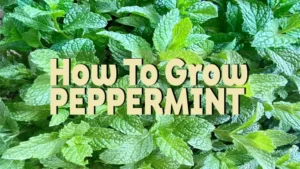
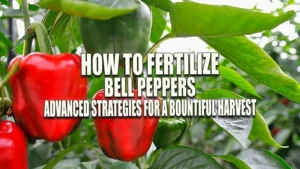
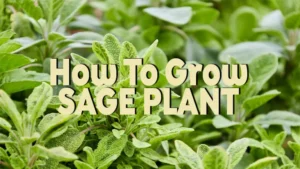
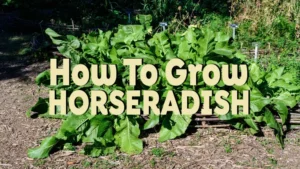

Leave your comment